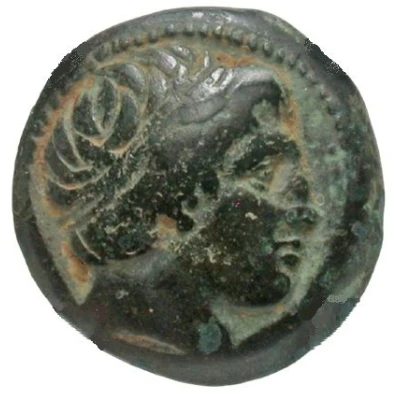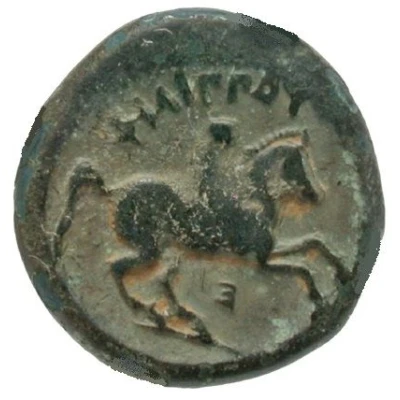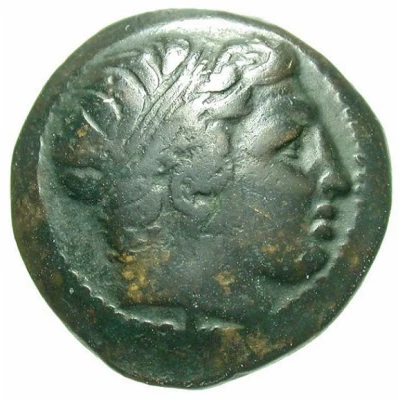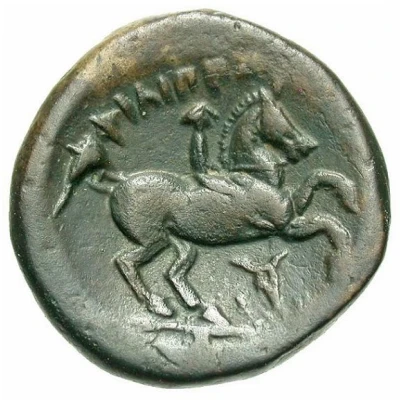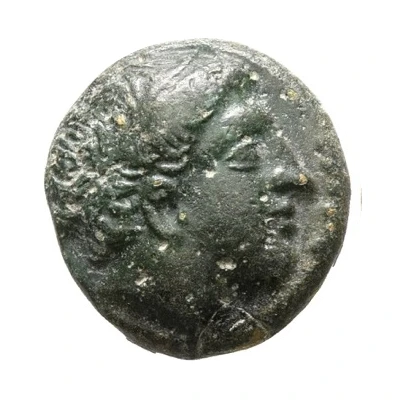
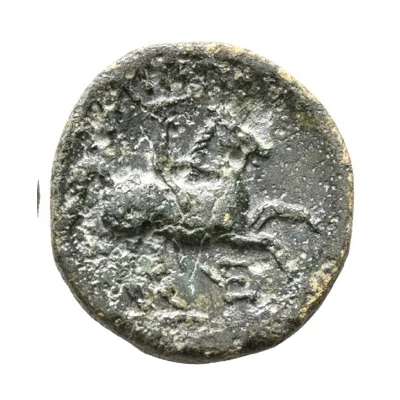

© ALAMIR
Tetrachalkon - Philip II VE Monogram 359 BC - 336 BC
| Bronze | 5.7 g | 16 mm |
| Issuer | Kingdom of Macedonia |
|---|---|
| King | Philip II (359 BC - 336 BC) |
| Type | Standard circulation coin |
| Years | 359 BC - 336 BC |
| Value | Tetrachalkon (1⁄12) |
| Currency | Drachm |
| Composition | Bronze |
| Weight | 5.7 g |
| Diameter | 16 mm |
| Shape | Round (irregular) |
| Technique | Hammered |
| Orientation | Variable alignment ↺ |
| Demonetized | Yes |
| Updated | 2024-10-10 |
| Numista | N#149100 |
|---|---|
| Rarity index | 71% |
Reverse
Youth on horse galloping right, VE monogram below
Script: Greek
Lettering:
ΦIΛIΠΠOY
VE
Translation:
Philip II
VE
Interesting fact
The Tetrachalkon coin was used as a means of payment for soldiers and mercenaries during the reign of Philip II of Macedon. It was a bronze coin that was valued at one-fourth of a silver drachma, and it featured the initials "VE" on one side, which stood for "Basileus Philippos," or "King Philip" in Greek. This coin was an important part of the Macedonian economy and played a significant role in the military campaigns of Alexander the Great, who succeeded his father Philip II as king.
